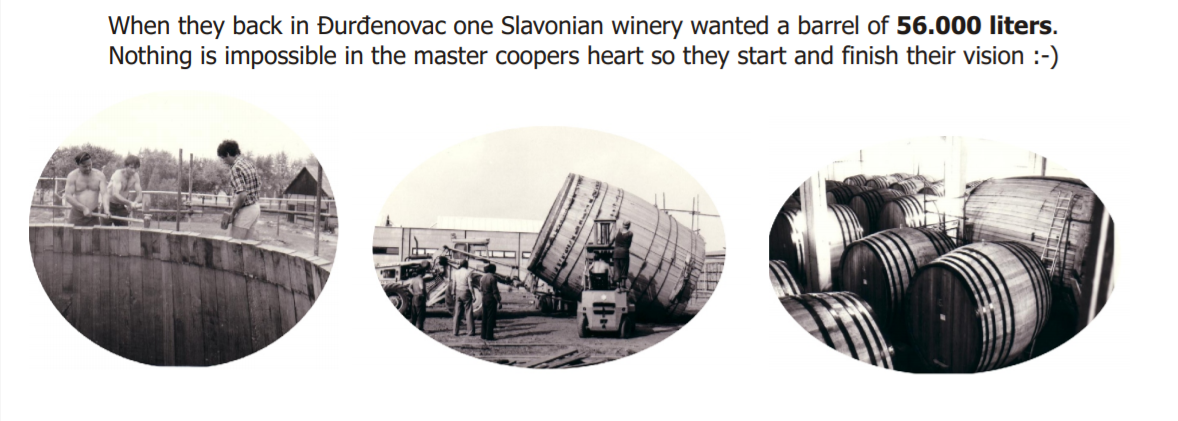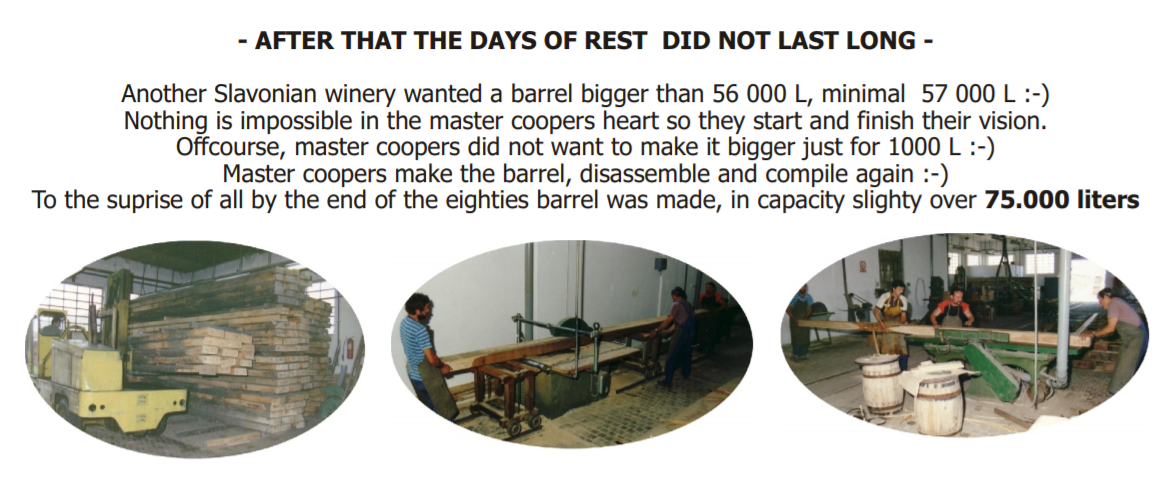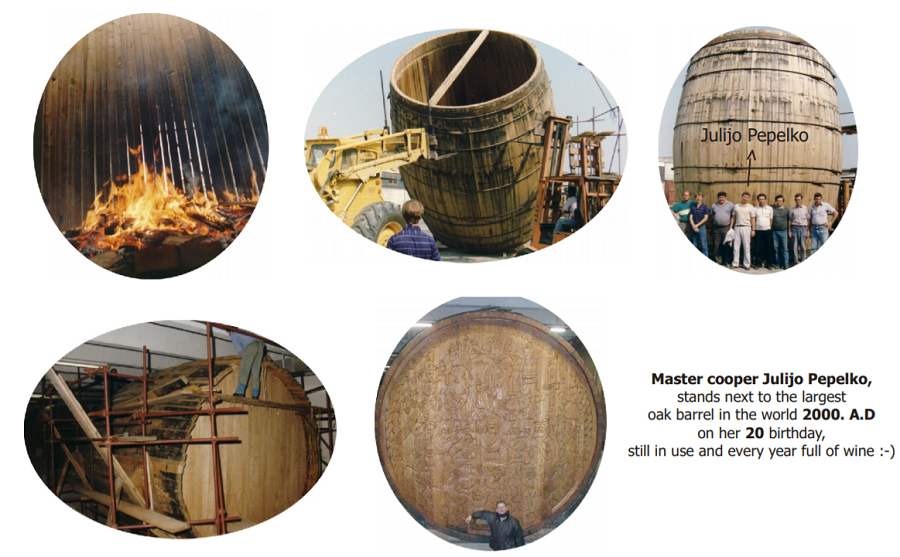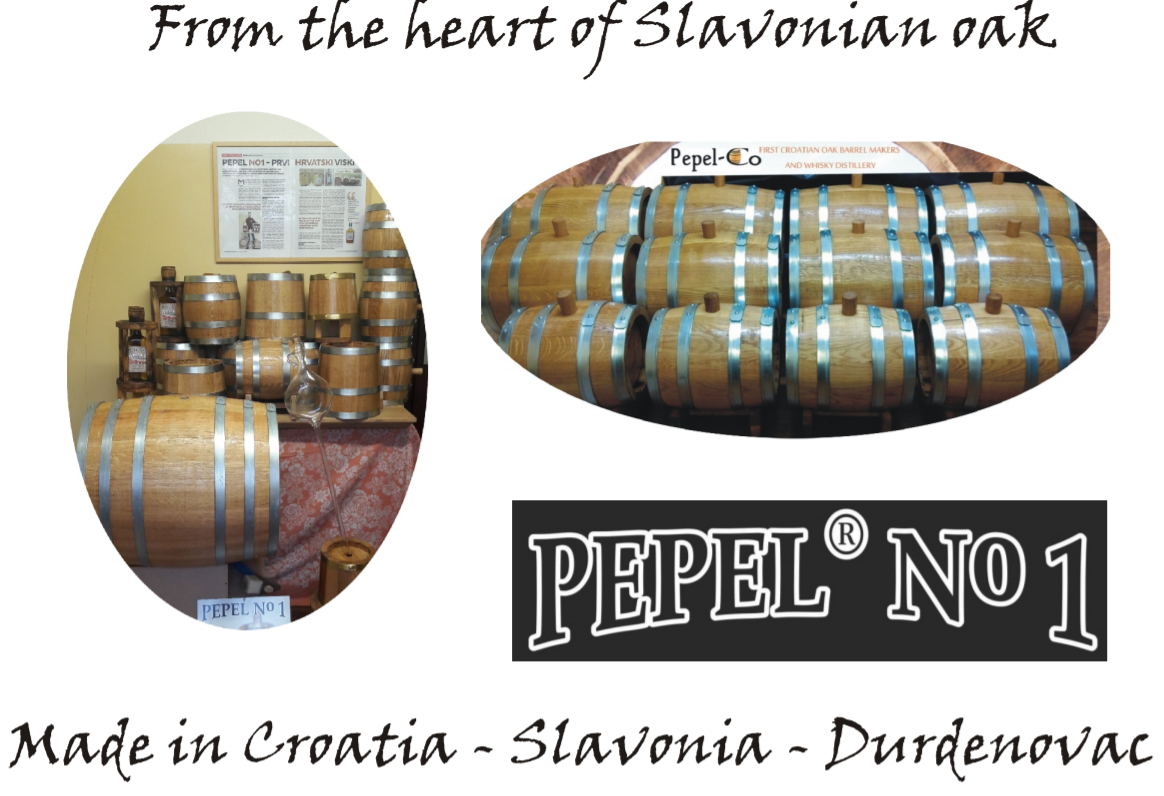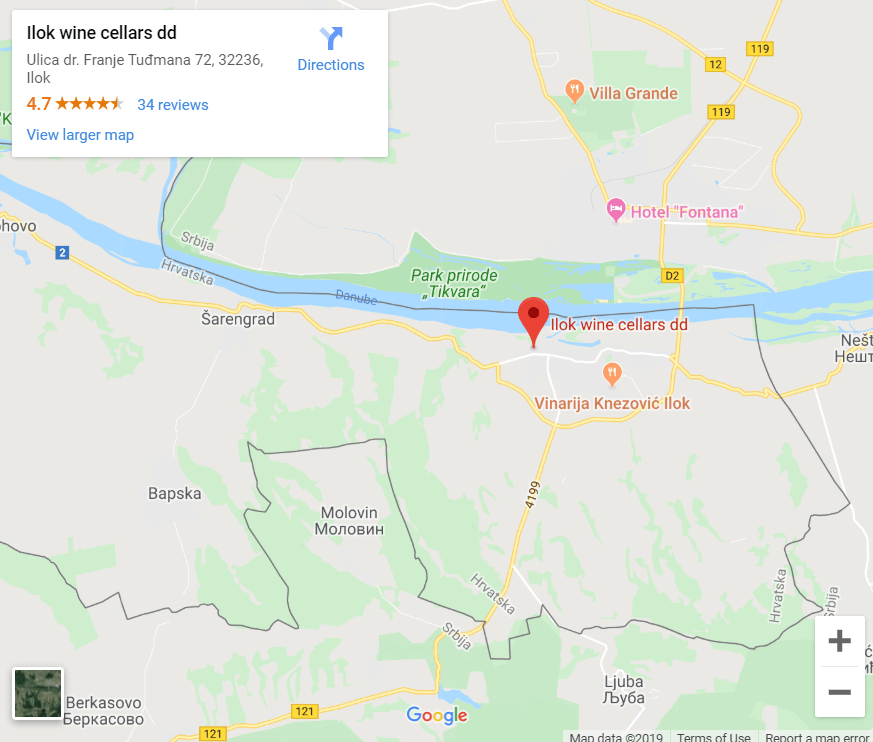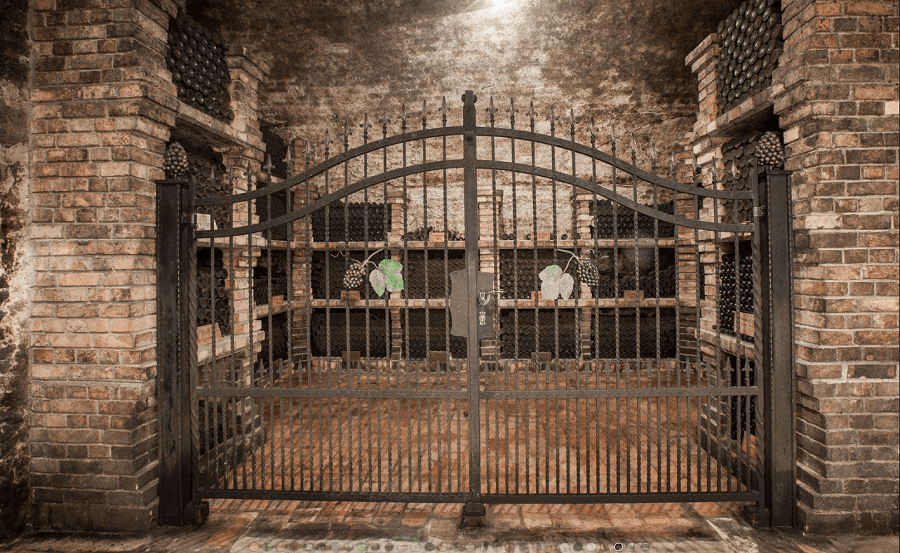Average Wine Consumption Per Capita in Croatia 22 Litres
ZAGREB, March 16, 2020 - In the 2017/2018 wine-making year in Croatia, the average wine consumption per capita was 22 litres, the same as in the previous year, according to the National Bureau of Statistics (DZS) data.
The total production of wine in 2018 was 726,000 hectolitres, and wines with protected designation of origin accounted for the majority of the total production (470,000 hectolitres, 64.8%).
Varietal wines account for 4.1% of the total production, and other wines for 31.1%.
The DZS data show that the total wine export in the 2017/2018 wine-making year was 232,900 hectolitres, while the initial stock was 712,800 hectolitres.
Total domestic wine consumption in the 2017/2018 wine-making year was 984,700 hectolitres, and other wines accounted for the largest part in the total consumption (468,000 hectolitres, 47.6%). The degree of self-sufficiency, that is, the ratio of production and total domestic consumption of wine, was 74%.
More wine news can be found in the Lifestyle section.
Winemakers Need Stronger Government Support
ZAGREB, February 10, 2020 - The Wine Act has ensured a key role for winemakers and their regional organisations in branding and protecting their wines, but wine promotion needs stronger government support, the vice-president of the Croatian Chamber of Commerce (HGK) for agriculture and tourism, Dragan Kovačević, said on Monday.
Kovačević was speaking at En Primeur, a tasting of young Istrian Malvazija wines at Zagreb's Hotel Esplanade. The event was organised by the Vinistra association.
Kovačević said that Austria allocated over €8 million annually for the promotion of its wines and that Croatia should do the same according to its financial ability.
"For us wine is not just a food and potentially important export product. Wine also plays an important role in tourism and helps in branding Croatia as a wine and food destination. That's why the HGK, together with our winemakers, has begun talks with the Ministry of Agriculture to meet all formal conditions so that financing regional organisations of winemakers and the national promotion of wines becomes an item in the state budget for 2021," Kovačević said.
Citing data for 2018, Krunoslav Karalić, Assistant Minister of Agriculture, said that the winemaking sector was recording positive trends, with wine imports decreasing and exports increasing.
"We will do all we can so that these trends continue," Karalić said, adding that this sector was an example of excellent cooperation between the ministry and producers who had participated in the preparation of the Wine Act.
The new national aid programme for the winemaking sector went into force at the start of 2019, ensuring HRK 11 million annually for promotion in the European Union and third countries and for investment in wineries and the restructuring and conversion of vineyards, Karalić said.
More news about the wine industry in Croatia can be found in the Lifestyle section.
Meet the Wine Roads of Croatia: Ludbreg in Varazdin County
December 20, 2019 - Some regions are better organised for wine tourism than others in Croatia - meet the Ludbreg wine road.
Living on a beautiful island of wine on Hvar, as I did for many years, in a picturesque region of Dalmatia whose wines are exported all over the world, I was constantly amazed that there are no official organised wine roads, as this is surely a great opportunity not only for tourism but to develop and promote one of the strongest aspects of life in Dalmatia.
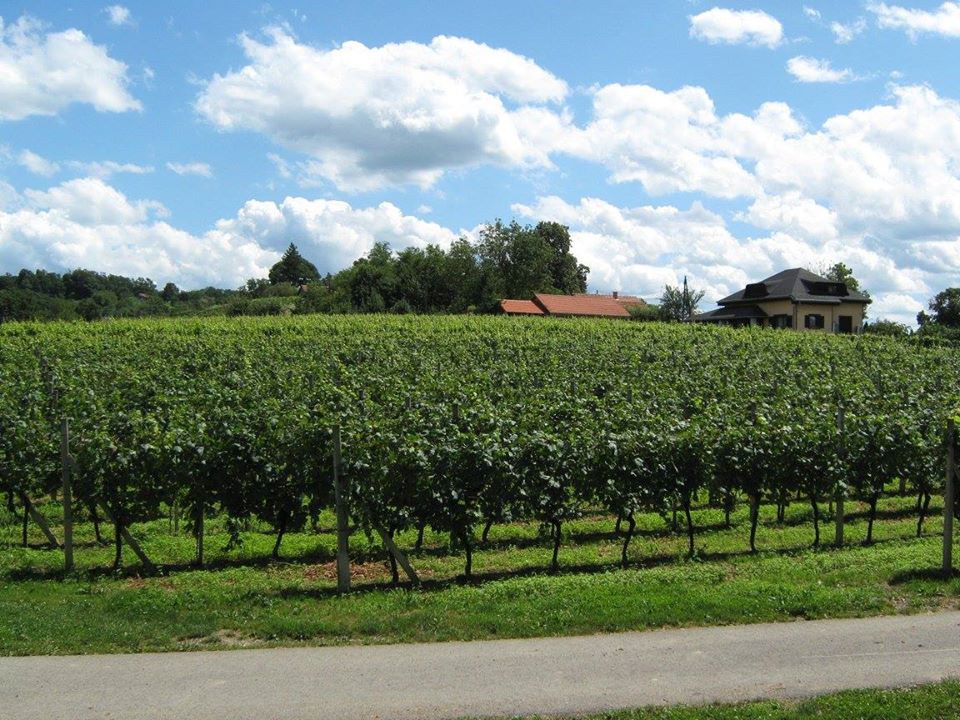
Cross the border into neighbouring Bosnia and Herzegovina, for example, and the first sign that you see is promoting the wine road of Herzegovina. And so too, all around Croatia, but sadly not in Dalmatia - at least for now. Things are a little more organised elsewhere in the country, including a very cute corner of northern Croatia, where white wines are king, and the closest vineyards to the centre of the world - Ludbreg in Varazdin County, which I first visited a few years ago. I was immensely impressed by the effort put in by enthusiastic local winemakers and restaurants to create the Ludbreg Wine Road, as well as the quality of the wines themselves. In their own words (a translation of their Facebook page, which you can follow here):
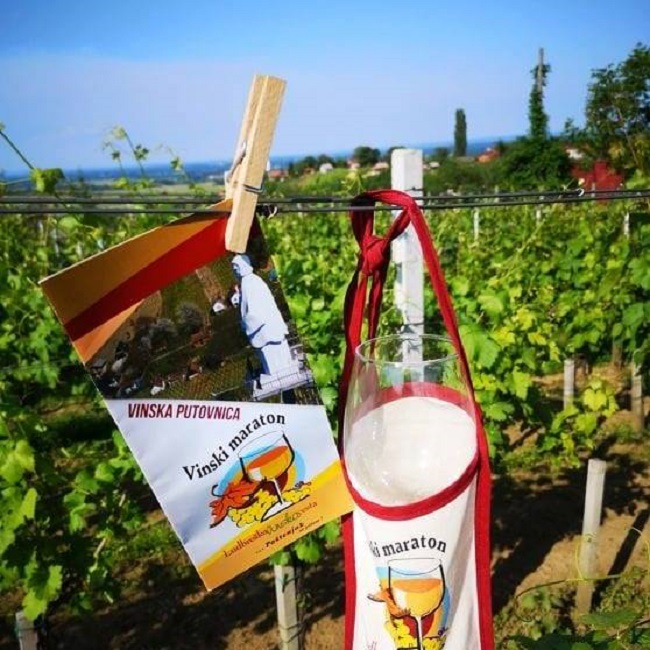
Once upon a time, in the 12th century, in the hills above Iovia (Ludbreg) lived a beautiful Ludberga. She was a skilled winegrower and she always worked hard in her vineyard and produced her famous sweet wine. At that time, everyone knew about Ludberga’s wine and beauty. As the years passed without Ludberga, Iovia’s Hills (the Ludbreg Winegrowing Area) were slowly forgotten. Wishing to restore the Ludbreg Winegrowing Area to its former lustre, the Ludbreg Wine Road was established.
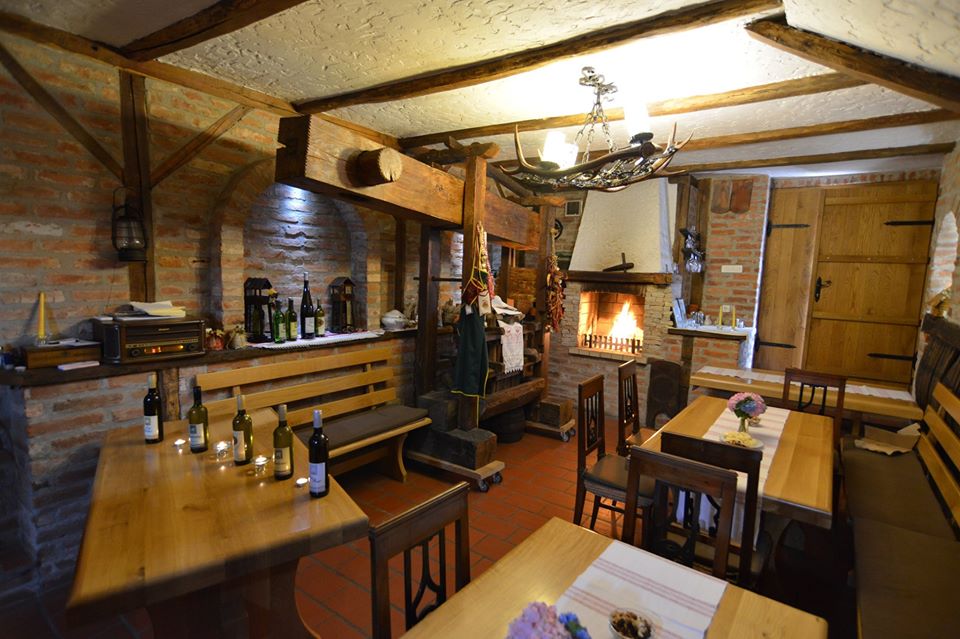
The Ludbreg Wine Road is located on the hills of the Ludbreg Winegrowing Area, which is an integral part of the Zagorje-Međimurje sub-region in the Continental Croatia Winegrowing Region.
The aim and purpose of the association is to promote wine tourism and its tourist presentation through a comprehensive wine area whose wine road includes wine checkpoints (wine-houses and cellars), and thus expands and stimulates the development of tourism, not just in the Town of Ludbreg, but also in the entire Ludbreg area and beyond.
The Ludbreg Wine Road includes: Restaurant/Tasting Room “Arabella” Globočec, Wine Cellar “Makar”, Wine House “Kirić”, Restaurant “Črn-Bel”, Winery “Stručić”, and Tasting Room “Kežman”.
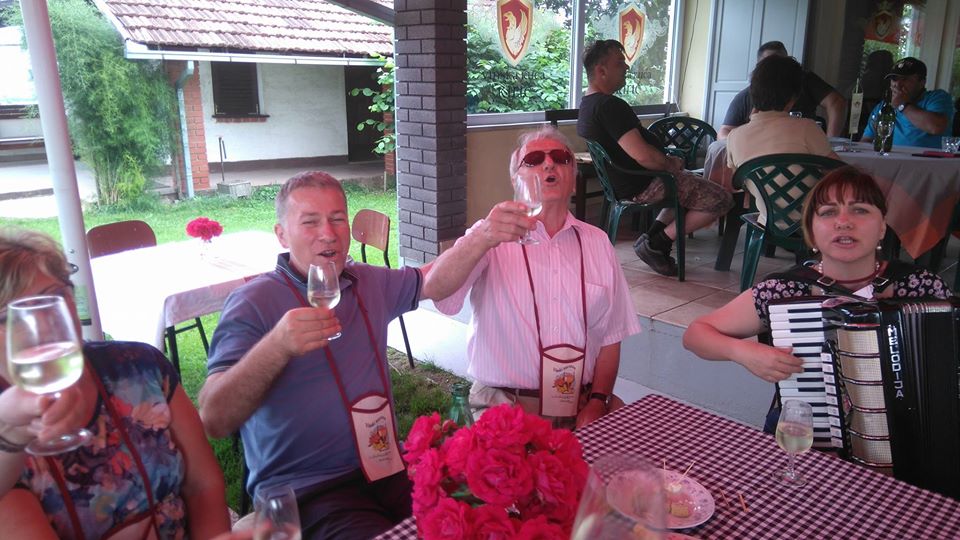
Here you can try: Graševina, Riesling, Pinot Blanc and Pinot Gris, Sauvignon, Green Silvanac, Chardonnay, Traminac, Moslavac and Manzoni, Muscat and Pinot Noir, Frankovka, Cabernet Sauvignon and, of course, our Poštenjak. In addition to the wines, the offer includes authentic “hilly” delicacies from the Ludbreg area.
Poštenjak, or “wine without malice”, is a quality wine that contains 70 percent of Graševina, 20 percent of Chardonnay and 10 percent of Pinot Gris. The wine is named after a popular character, honest and naive Dudek from the Croatian TV series “Gruntovčani”, written by screenwriter Mladen Kerstner, who was originally from Ludbreg.
The Ludbreg Wine Road includes a statue of St. Vincent with a viewpoint. This statue of St. Vincent is the tallest such statue in Croatia and even in the world, and offers a view of Varaždin County, Koprivnica-Križevci County, Međimurje County and neighbouring Hungary.
Also, we always take care of cleanliness and environmental protection of the area around the wine road.
So, if you would like to taste or drink a glass of wine and try some “hilly” delicacies, you can find us in the very centre of the world.
Learn more about the wines of Lubreg in the video below from G.E.T. Report (in Croatian), and to learn more about one of the most fascinating towns in all Croatia, check out TCN's visit to Ludbreg here - amazing place.
Slovenia's Suit Against EC Over Croatian Teran Wine Starts Before EU Court
ZAGREB, December 3, 2019 - An oral hearing in a case in which Slovenia is suing the European Commission over the use of the name Teran started before the General Court of the EU in Luxembourg on Tuesday, when Croatia's representative presented the position of her country on this issue.
Slovenia's lawsuit ensued after the European Commission adopted the delegated act in May 2017, specifying the conditions under which the name of the Teran wine grape variety may appear on wine labels of the Protected Designation of Origin (PDO) 'Hrvatska Istra' (Croatian Istria) a Croatian wine, allowing its producers to use the name teran in the labelling of their wines under specific labelling conditions.
Slovenia insists on the revocation of that delegated act.
Croatia's representative Gordana Vidović Mesarek said today that the delegated act actually rectified the injustice which had been done to Croatian wine producers in Istria.
The European Commission has authorized Croatia to use the protected name Teran for its wine, although it is protected as Slovenian. The EC has allowed the use of the name Teran on the wine label with the PDO 'Hrvatska Istra' (Croatian Istria).
In recent years, Slovenian winemakers and the Ministry of Agriculture strongly lobbied in Brussels to ensure that the European Commission withdraws the proposal that the wine produced in Istria from the Teran grape variety can be sold under the label "Croatian Istria - Teran".
Before Croatia's accession to the EU, Slovenia protected Teran as its own product at EU level, meaning that no one but Slovenian winemakers were allowed to sell wine under that name.
Croatia complained against this, saying that Slovenia did not have the right to protect the name because the wine produced in the Slovenian part of the region of Istria under that name was made from the Refosco grape variety, while in the Croatian part of Istria it was made from the Teran grape variety.
In this case before the General Court, Croatia is not a party and its representative only presented Zagreb's position on this matter.
Slovenia's representative said that the current solution could delude buyers who think that the wine is from Slovenia while they buy Croatian wines under that name.
More wine news can be found in the Lifestyle section.
VINOcom Wine and Culinary Art Festival to Take Place in Zagreb
ZAGREB, November 18, 2019 - The 14th edition of the wine and food festival "VINOcom" will be held in Zagreb's Hotel Esplanade on November 22 and 23 with more than 300 exhibitors taking part in the event.
The exhibitors are mostly wine makers and producers of delicatessen products from Croatia and Europe and Slovakia is this year's country-partner, the festival's organisers told a press conference on Monday.
"Zagreb VINOcom in one of the oldest festivals in Croatia that promotes wine, food and general table etiquette. I believe that this year again it will attract a large number of visitors and experts and I hope that we will meet their expectations similarly to previous years," the festival's director, Ivan Dropuljić said.
Apart from presenting and providing tasting of more than 200 types of wine, and lots of different cheeses, prosciutto, kulen salami and sweets, about a dozen workshops will be organised during the festival.
Speaking on behalf of Slovakia as the country-partner of this year's festival, public relations consultant in the Slovak Embassy in Zagreb, Jan Stark, said that he was pleased with the cooperation which he believes can continue considering the similarities between the two countries.
"Three wine-makers from Slovakia will be exhibiting and talks are already underway about continuing cooperation so that Croatian wines can be presented in Bratislava and Slovak wines in Zagreb. Slovakia has a long tradition of wine-making and over the past few years it has won medals at international wine competitions," Stark underscored, adding that Slovakia's per capita wine consumption is 12.5 litres annually and that about 600,000 hectolitres of wine is produced each year.
This year as in previous years the festival will have a humanitarian component and part of proceeds will be donated to the RokOtok association which promotes strengthening ties between children and parents through various activities.
More festival news can be found in the Lifestyle section.
Tourism and Wine are Inseparable, Iter Vitis Conference Hears
ZAGREB, November 17, 2019 - Tourism and wine are inseparable, an international conference of the Iter Vitis European Cultural Route, which took place in Motovun, Istria County on November 14-16, has concluded, organisers said on Saturday.
The "From heritage to brand" conference, held as part of the Iter Vitis European Cultural Route General Assembly, brought together more than 200 experts, tourism employees, winemakers and representatives of institutions from 11 countries.
Franjo Matušić, state secretary at the Ministry of Tourism, said Croatia had an exceptional cultural heritage because different cultures mixed throughout its history, and that 12 European cultural routes, including Iter Vitis, passed through it.
He said wine had always been an essential part of Croatian tradition, and that its quality and the number of autochthonous wine grapes proved it.
Oenology and gastronomy are inseparable and one of the ten key products on which the development and future of Croatia's tourism is based, Matušić said.
Assistant Regional Development and EU Funds Minister Stella Arneri said environmental protection and rural tourism were important for a sustainable vision of development. This vision is centered on the rich cultural heritage which, included in cultural routes, gains additional visibility and protection, she added.
Iter Vitis director Emanuela Panke said wine had always been linked to tradition, identity and lifestyle as well as being one of the key instruments of intercultural dialogue.
The Iter Vitis European Cultural Route passes through 20 states and Croatia joined it in March this year. The route encourages the development of wine destinations.
Cultural routes facilitate the development of rural areas and year-round tourism, and joining Iter Vitis is in line with Croatia's tourism development strategy until year 2020, said Dijana Katica, president of a Croatian tourism and rural development association.
More tourism news can be found in the Travel section.
Make Slavonia Great Again: Oak Barrel Production Returns to Croatia
October 21, 2019 - Slavonian oak is among the best in the world and particularly sought after by the wine industry. And now Slavonian oak barrels are being made once more in Croatia.
The first time I heard about Slavonia was back in 1996. I had no idea that it was in Croatia, and my introduction to the region was due to one of its finest products - Slavonian oak. In my new job as a wine merchant almost 25 years ago, I learned that the three most highly prized types of oak for ageing wines came from France, the United States, and Slavonia.
Time passed, and I moved to Croatia and eventually visited Slavonia, the region with the famous oak. These boys sure knew how to build a wine barrel - the lead photo is of the 53,000 litre barrel in Kutjevo.
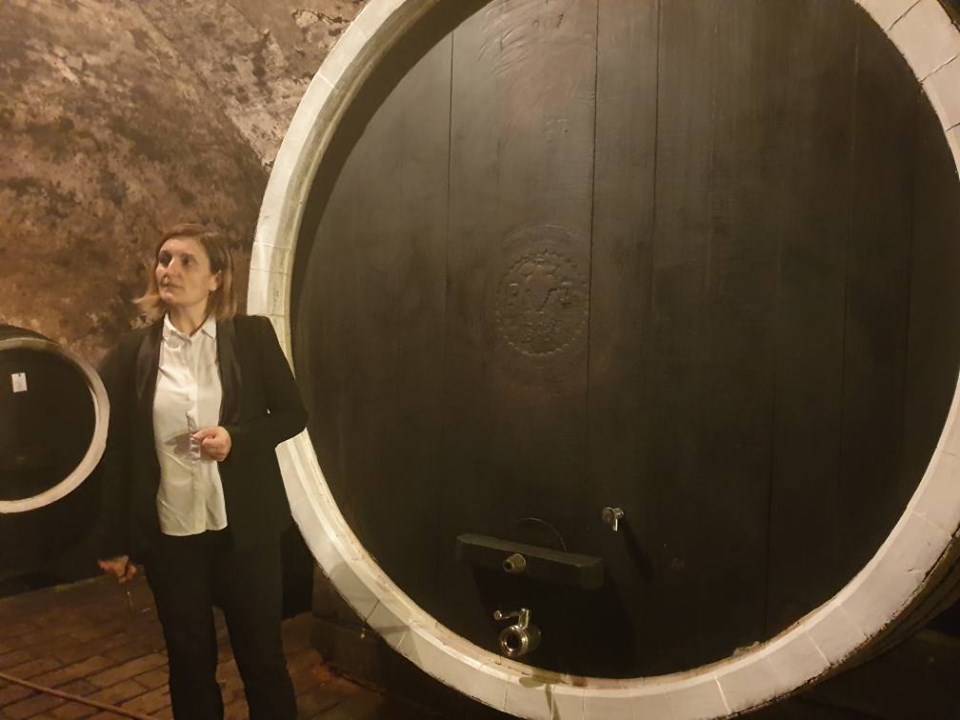
Below, one of 9,000 litres in Ilockli Podrum, scene of our weekend visit, and currently the largest barrel in the Ilok cellars. It used to be one of the smallest, but all the big ones were destroyed during the war. And it was during my tour of Ilok that I learned the most incredible thing. While the winery continued to use Slavonian oak for the ageing of its wines, some of which were served at the Royal weddings of both William and Harry, as well as the Queen's coronation back in 1953, until very recently, it was impossible to order these barrels in Croatia.
For there was nobody in Croatia making Slavonian oak barrels for the Croatian wine industry or any other. They continued to make Slavonian oak, but the barrels were ordered from coopers in Italy or France. Slavonian oak quality going to Slavonian wine quality via a foreign country's expertise. Crazy.
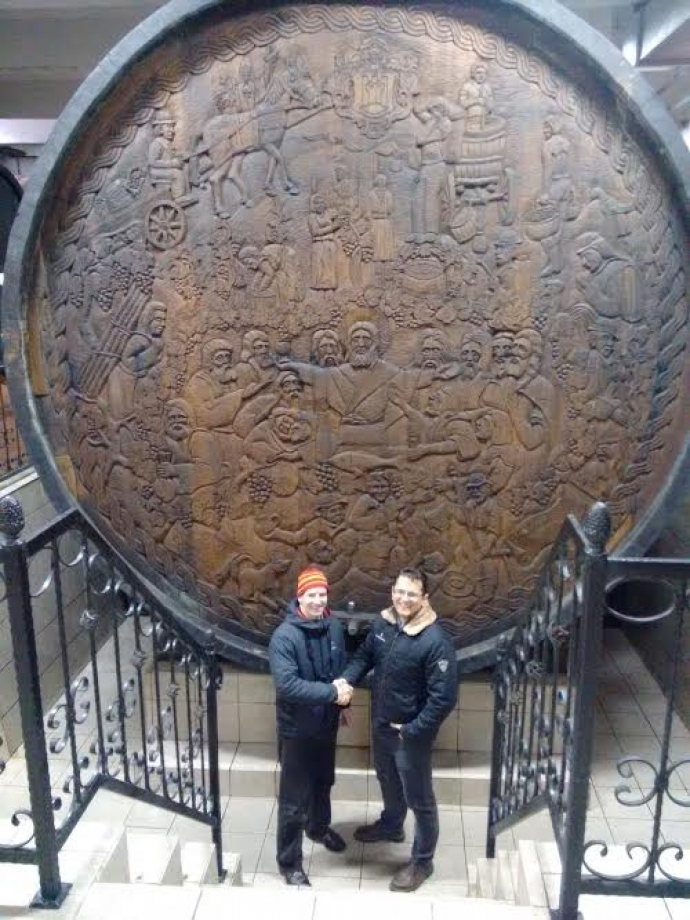
The biggest wine barrel ever made from Slavonian oak, some 75,000 litres and still in use today in Erdut. And this very same barrel is linked to the rebirth of the Slavonian oak barrel industry...
Let's go back 40 years or so to days when life was simpler in Djurdjenovac and Slavonian oak barrels were produced locally.
A 56,000 litre barrel? Why not bigger? Enter the monster 75,000 litre barrel now in Erdut, above.
At the end of 2017, the latest chapter of Slavonian oak production was written. Master cooper Julijo Pepelko and his son Hrvoje teamed up to start Pepel Co, once more making barrels from Slavonian oak. And not only that, but some of the oak barrels were put to use to make an entirely new and totally unique product - Croatia's very first whisky, PEPEL No. 1.
We have yet to try it, but it is on the TCN list. In the meantime, let's celebrate a little bit of Slavonian quality which has come home.
Learn more about the oak barrels and whisky of Pepel Co from the official website.
Croatia's Most Expensive Wine: Selling Well at 7,400 Euro a Bottle
October 20, 2019 - There are few more fascinating places in Croatia than its easternmost town of Ilok and a prized Traminac with an incredible story. You can have a bottle for just 7,400 euro, but be quick - there are just 182 left for sale.
I have been fortunate enough to have travelled extensively all over Croatia in the last few years, learning about its many unique stories and experiences. It really is a country like no other, and it has been a joy and privilege to discover and report on many things I find, often for the first time in English. And the more I travel, the more I discover, and the more I want to explore...
Before this weekend, there were four major places on my list that I had yet to discover in Croatia - Ilok, Vucedol, Kopacki Rit and Palagruza. The list is now down to one, and I have my doubts that I will make it to formidable Palagruza, but the incredible introductions to the other three all in one weekend means I can be patient about Palagruza for now.
There is SO much to write about Ilok and the incredible Ilocki Podrum, and there will be a big Ilok feature article soon, but I wanted to tell you about the most expensive bottle of wine in Croatia, and one with rather an incredible story, which just keeps on giving. It is a wine I have heard much about over the years, but the visit to Ilocki Podrum was my first chance to hear it from the winery involved.
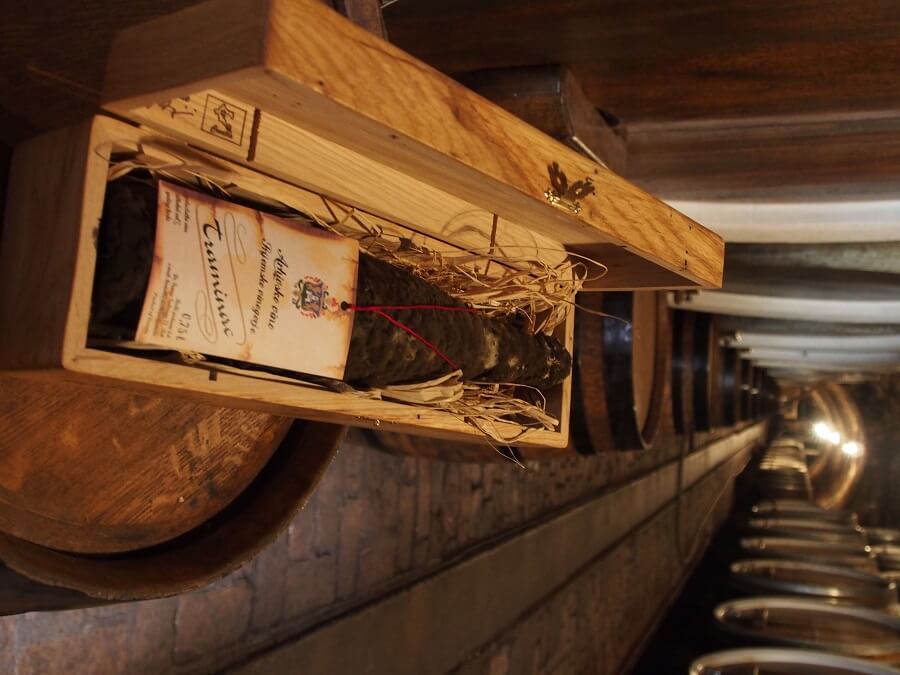
(Photo credit Ilocki Podrum)
The year is 1953, and a young British queen is crowned, with her coronation being a global event attended by dignitaries from all over the world. Upon becoming queen in early 1952, gifts appeared from all over the world, including from then Yugoslavia. Among them, a white wine called Traminac from Ilocki Podrum on the Danube. Queen Elizabeth II apparently took a liking to the wine's label and asked to try it. The rest is history, and some 11,000 bottles of the 1947 Ilocki Podrum Traminac were ordered for the coronation.
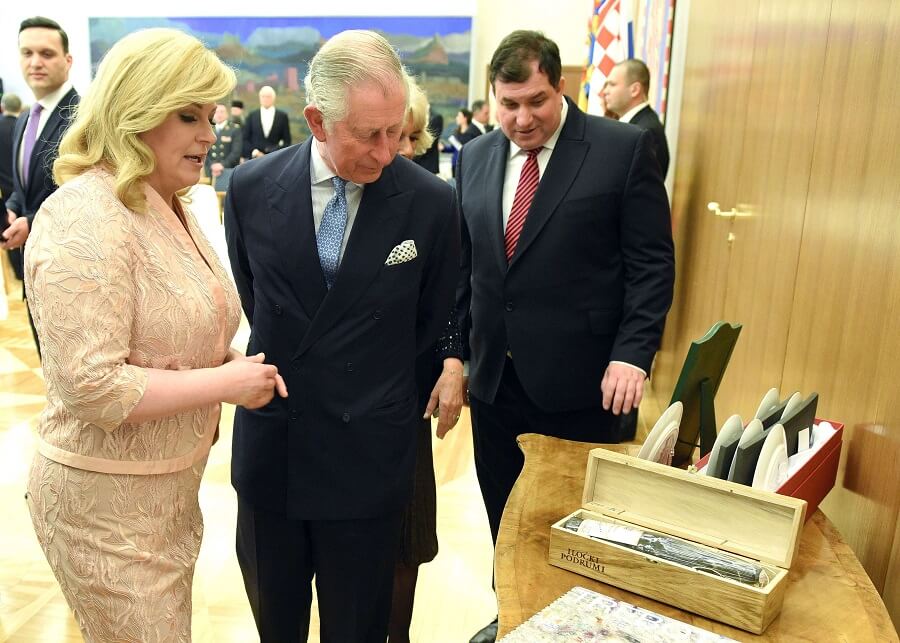
(Photo credit Ilocki Podrum)
It was the start of a royal connection between Ilocki Podrum and the British Royal Family, which continues to this day, and royal sommeliers descend upon Ilok each year to taste and buy fresh stocks for the royal cellars. Traminac from Ilok was served at the weddings of both Prince William and Prince Harry, and their father was gifted a rare bottle of the 1947 Traminac enjoyed all those years ago at his mother's coronation on a 2016 visit to Croatia. President Kolinda Grabar Kitarovic was on hand to pass on the rare gift from Ilocki Podrum owner Juraj Mihaljevic.

Not only rare, but a very generous gift as it turns out. The current retail price of the 1947 Traminac is an astonishing 55,000 kuna a bottle (7,400 euro) I discovered on our excellent tour of the Ilok cellars yesterday.
"Yes, but price is one thing, finding a buyer is another," I replied when I heard the price. "When was the last bottle sold?"
"About 2 weeks ago," came the reply. "A Russian visitor heard the story, wanted to try, and we opened the bottle for him during his visit." And it appears that the Russian visitor is not alone. Five years ago, there were about 1,200 bottles left. Today, just 282, so they have been selling at almost 200 a year at that rate. Plans are to sell 182 more only, then keep the remaining 100. So be quick if you are interested!
But the British royal connection is not the most interesting part of the story of the 1947 Traminac, for without the bravery and ingenuity of a few good men during the 1991 regional conflict, there would have been no wine to gift Prince Charles.
As you can see from the map above, Ilok is surrounded on three sides by Serbia, and it was not long before the town and its wine cellars succumbed to the enemy. Barrels were smashed, wine was poured out or used to make rakija, and a proud winery faced the same fate of destruction that was sadly prevalent all over the region.
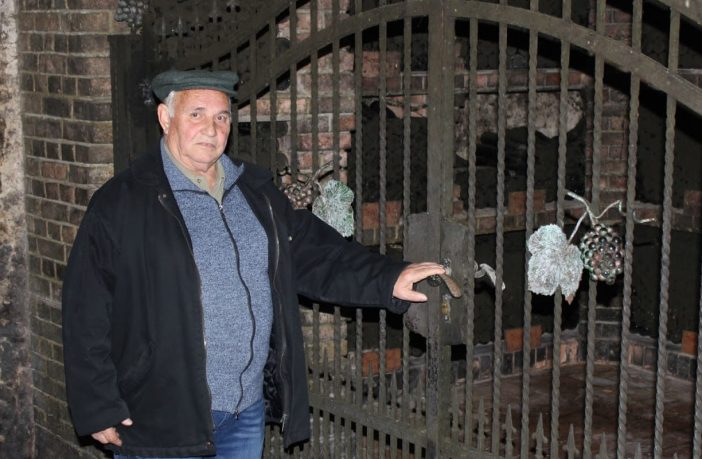
(Photo credit Vinske Price - and I do encourage Croatian readers to check out the in-depth article with Franjo Volf, the Traminac saviour)
A plan was hatched to try and save the most precious archive wines from the enemy by a few good men, and the project was led by longtime employee Franjo Volf, pictured above. Volf and his few assistants managed to build a wall to block off this section of the winery, then cover the new wall with the black mold and cobwebs found elsewhere, so that it looked as though the wall had been there for years.
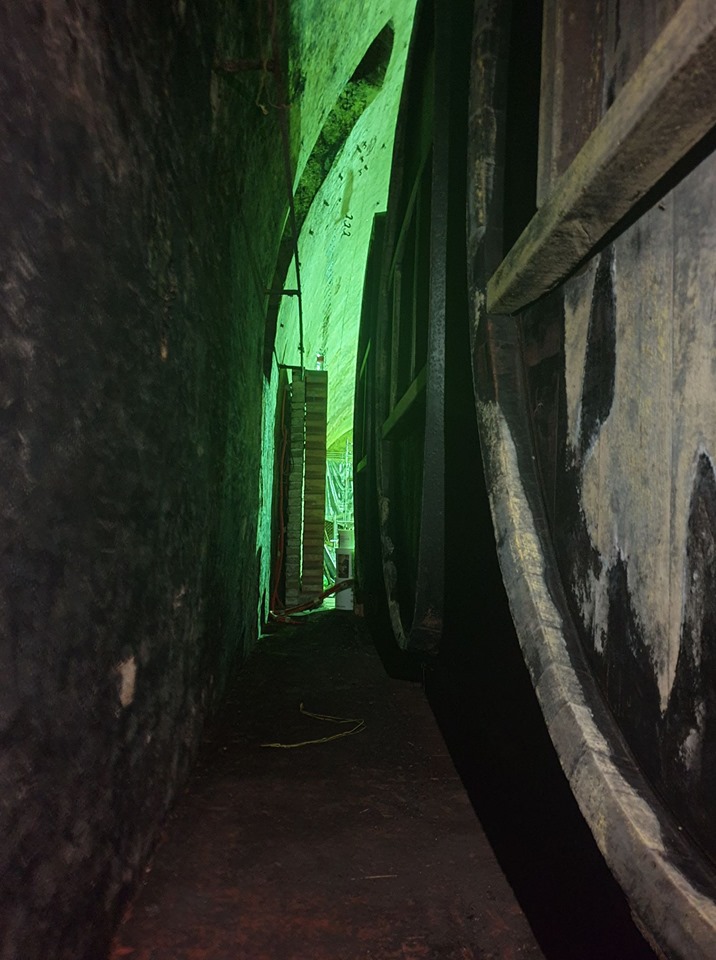
One floor below, Volf and his helpers managed to preserve some more bottles by placing them behind these big barrels and covering them with sand. They went untouched and undiscovered. Some 8,000 archive bottles in all, including the precious 1947 bottles.
After liberation, Volf and his merry men returned to find that their heroics had worked. His wall was destroyed and this gate put in its place, where most of the precious archive wines are stored today.
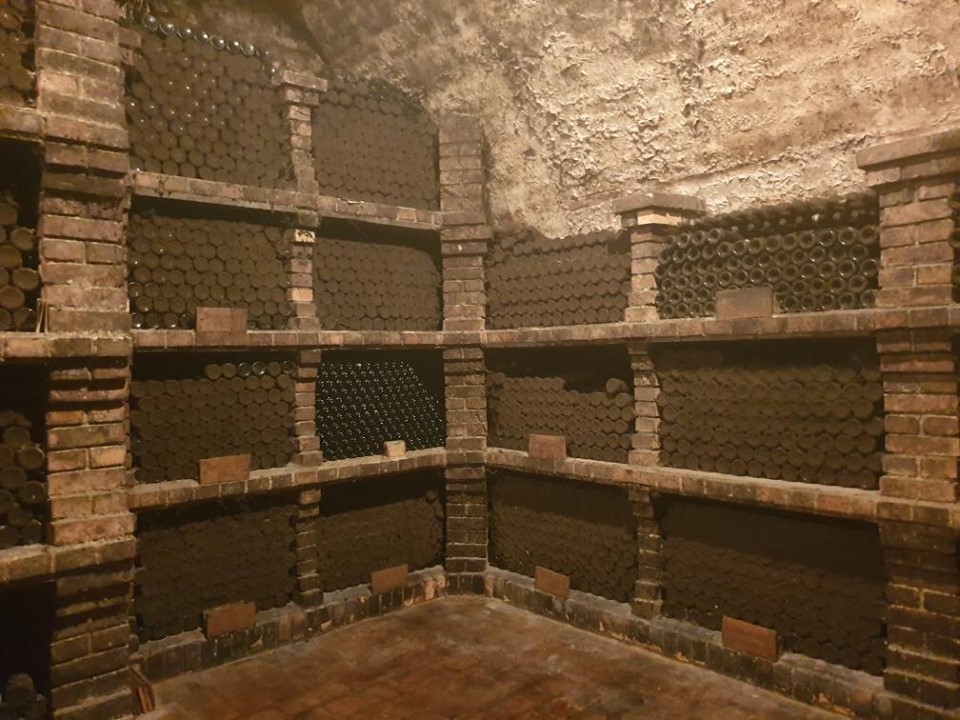
And while most of the bottles are covered in the dust and grime that one accumulates in a cellar dating back centuries, there is one newer section of bottles - these have been ordered and reserved for a couple named Harry and Meghan.
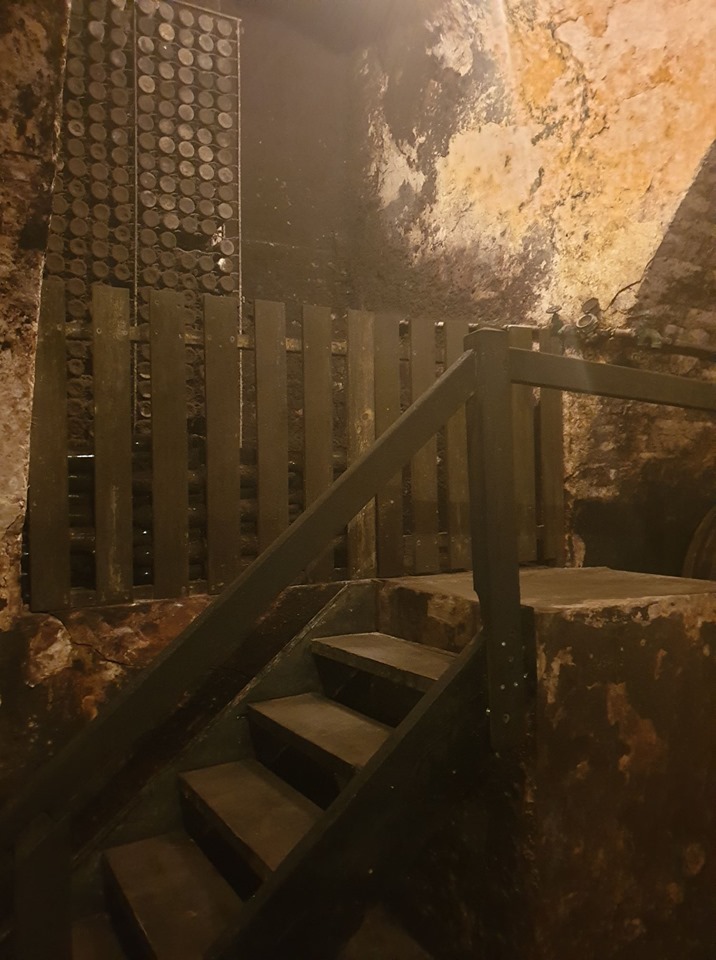
But the most interesting section is directly opposite the gate above - wooden steps to the place where the remaining 1947 Traminac now lives.
As for Franjo Volf, he apparently retired. Due to the war, he missed out on 5 years in his workbook and so ended up on a minimal pension. Owner Mihaljevic adds to the pension each month as a token of gratitude to the man who saved so much precious wine. Now 83 and still living in Ilok, Volf is rightly regarded as a hero locally.
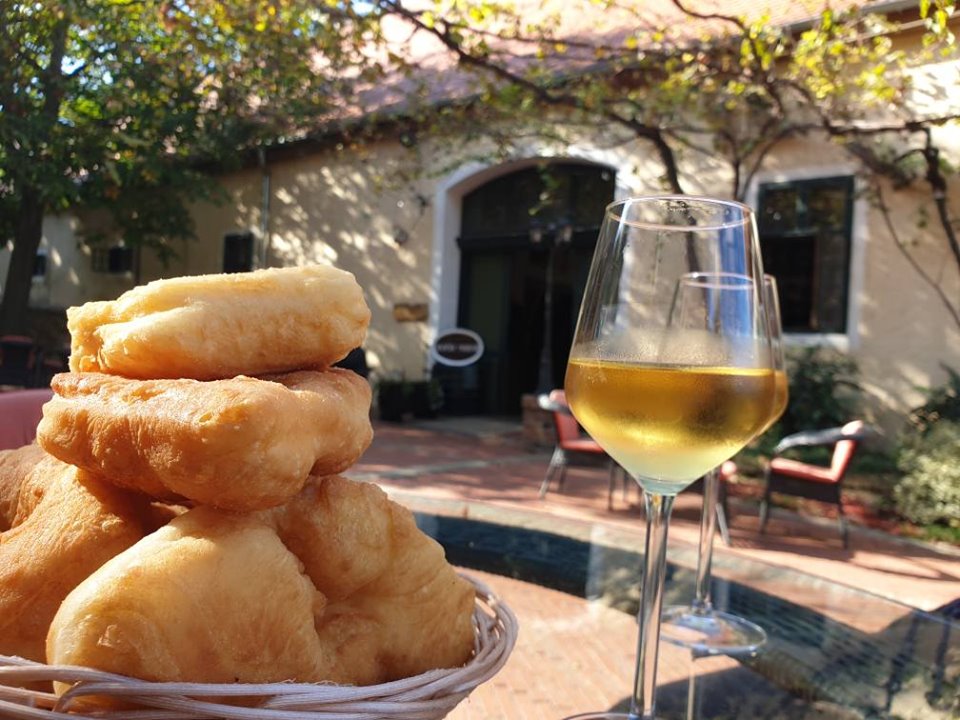
More on Ilok and the wines of Ilocki Podrum coming soon, but a quick mention of the greeting which awaited us when we arrived. A delicious welcome Traminac to accompany one of the most unusually named pastries I have ever tried - literally translated as Torn Underpants!
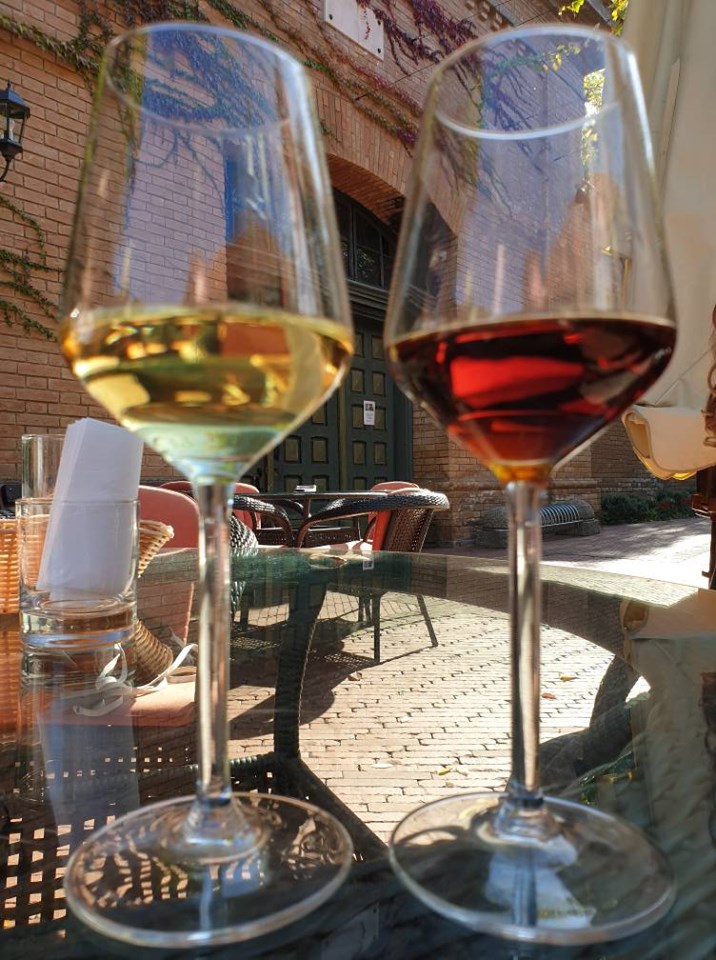
And they take their Traminac seriously in Ilok, with no less than 8 Traminac varieties in one vintage, picked at various times of the year, from late August to December, in years when there is ice wine. Incredible variety in colour from the same grape variety.
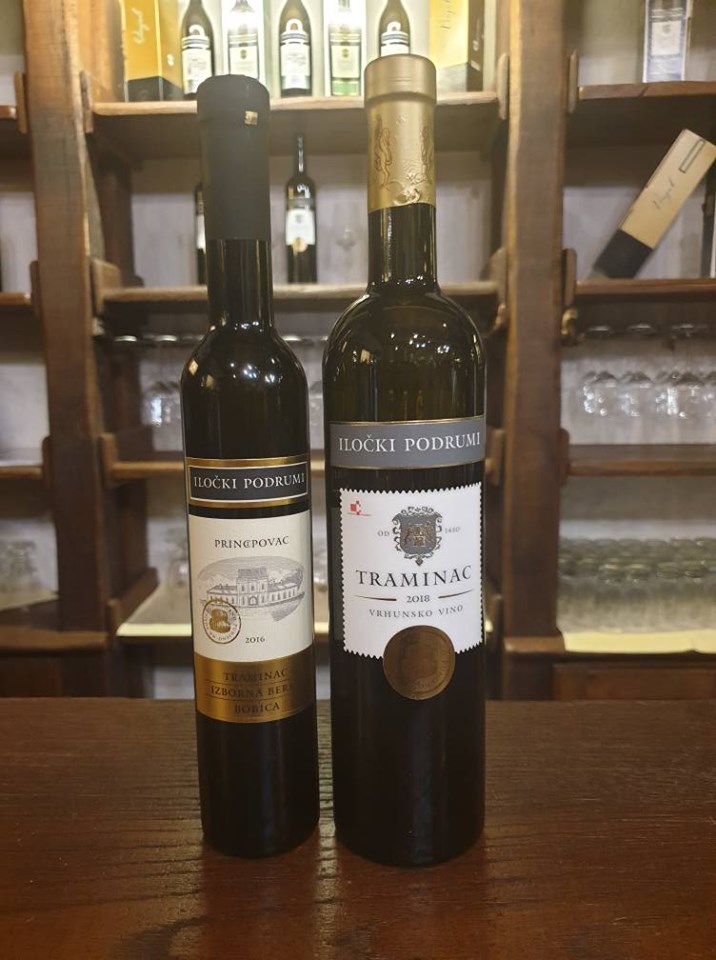
And if you are a fan of the British Royal Family and want to drink like a Royal, but can't afford the 55,000 kuna price tag for a bottle of the 1947 Traminac, why not check out the wines enjoyed by the guests of Harry and Meghan instead (above)? Both were delicious.
To learn more about the fabulous world of Ilocki Podrum, visit the official website.
Money Week Features Hvar in 4 Great Holidays for Wine Lovers
September 16, 2019 - Hvar wine tourism is booming, and that message is going international. Money Week features Croatia's sunshine island in its top wine holiday ideas.
Like many things in Croatian tourism, the potential was always there, but it went largely unnoticed.
Until - at least in this case - about a decade ago, when a passionate wine-loving local called Ante Lacman decided to start offering the first accompanied wine tours on the island of Hvar.

An island with a 2,400-year wine tradition dating back to the Ancient Greeks, with grapes still gown on the fertile UNESCO World Heritage Site where the Greeks established their first agricultural colony and planted the vines they brought with them from the island of Paros. An island rich in indigenous grape varieties not grown elsewhere - Bogdanusa, Darnekusa, Prc, Palarusa, Kortolaska, Mekuja. An island which is home to the only Master of Wine in all Croatia - hands from London, grapes from Hvar. The personalities and winemaking styles of Hvar's winemakers are as diverse as the terroirs and mico-climates on the island. Add to that the magnificent beauty of the sunniest island in Europe, and it was only a matter of time before Lacman's concept of wine tourism on Hvar became a major hit. The latest international publication to notice last week was Money Week.
Here is what Money Week had to say about Hvar and the Hvar wine scene.
An ancient wine scene in Croatia
“Located off the coast of mainland Croatia is the island of Hvar – and if its idyllic location in the Adriatic Sea isn’t enticing enough, the island also boasts a wine scene that pre-dates the arrival of the ancient Greeks,” says Evie Carrick on Travel + Leisure. Hvar Wine Tours offers a half-day Waves and Wine tour (€125) that combines wine tasting with swimming in the sea.
Guests can talk to winemaker Toni Bojanic, whose family has made wine on the island for 500 years. There is also a subterranean cave on the southern shore that serves as a wine cellar and can be visited. “If you want to experience the creations of Croatia’s famous winemaking pioneer, Zlatan Plenkovic, Hvar Wine Tours docks at Plenkovic Bilo Idro for four courses of wine paired with local food – think marinated prunes, smoked ham and Croatian cheeses.” Hvar’s first five-star hotel, Palace Elisabeth, has its “soft opening” this month – perfect for those “looking for a luxurious wine holiday”.
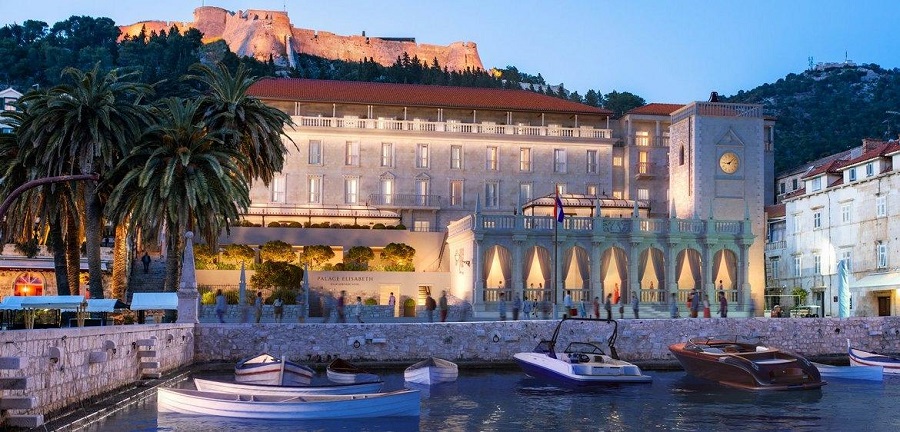
Here are the top 5 wine tours available on Hvar - plenty of exciting diversity.
To learn more about the wonderful world of Croatian wine, check out the Total Croatia Wine in a Page guide.
Can We Have a Croatian Wine Museum to Celebrate Bourdain's 'World-Class Wine'?
Summer is coming to an end and the first day of the new school year is just around the corner.
It has been yet another eventful year for Croatian tourism, with plenty of debate, from cruise ships to statistics, celebrity visitors to what to do on those increasing rainy days.
I divided most of my summer between Jelsa and Varazdin, and it was a really fascinating exercise watching the tourism season progress in Jelsa, especially as what I saw on the ground seemed to have little correlation with those impressive statistics that were being pumped out.
But more interesting to me was how little of the content the destination was actually being used productively, and a strong available brand was also left unused. I put my musings on the future direction of Jelsa tourism into Some Simple Steps to Improve Jelsa's 2-Star Strategy on Hvar.
But it is not just Jelsa. With the bad weather earlier this summer, Google searches on TCN for "what to do on a rainy day in... (supply destination)" went through the roof. Take the sun and sea out of the equation, and what is there left to do?
The fact is, there is SO much to do in Croatia, but you have to look a little deeper, as the Kings of Accidental Tourism are not very good at bringing the information and attractions to tourists. As I said in a recent interview for Balkan Insight, Croatia is the most content-rich destination I know, but tourists really struggle to find that content at times.
Take one simple example - wine.
Going back to Jelsa for a moment, none of the locals could tell me what Jelsa's tourism brand was, despite the fact we are in the 108th year of tourism in the town. As an outsider, the answer is brutally obvious. Jelsa is historically (and currently) the most important wine town in Dalmatia, so let's make part of its brand the wine capital of Dalmatia. Coupled with Jelsa's great lifestyle and safe, family-friendly destination, a brand such as Relaxed Family Lifestyle in the Dalmatian Wine Capital immediately gives Jelsa more of a personality and points of interest that the current non-brand.
It is crazy to me that the majority of tourists coming to Hvar, for example, have no idea that Hvar is a famous wine island. And not just Hvar - the level of understanding of one of Croatia's greatest assets is still minimal.
But not surprising. After Anthony Bourdain told the world about Croatia's world-class wine, world-class food and world-class cheese, what has been done to present the Croatian wine story and make it accessible to tourists?
Where, for example, is the Croatian wine museum that can tell the incredible Croatian wine story, offer tasting experiences, and provide great entertainment on a rainy day?
There is actually a Facebook page called Wine Museum in Croatia - based in New Zealand. It introduces itself thus:
Upon the initiative of the Croatian winemakers from California and New Zealand in 2009 and 2010 there was a wish to establish the wine museum of Croatia...
A long way from Croatia.
A museum of viticulture and winemaking did open in July on the Peljesac Peninsula, but apart from the initial press release, there seems to be no more information in English or Croatian. There is a Facebook page, which I can no longer find, with 84 likes.
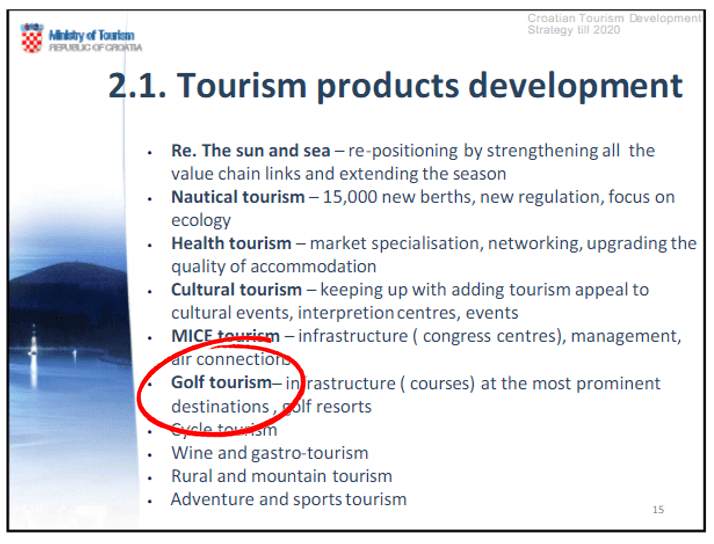
And yet, the Bourdain appreciation aside, wine and gastro-tourism are at the heart of the 2013 - 2020 strategic plan of the Croatian Ministry of Tourism.
What exactly has been achieved in the last 6.5 years?
There is still no wine road for Dalmatia, surely an essential ingredient for wine lovers wanting to explore. When I asked the Ministry of Tourism press department, they claimed that this was not true, and that there were several wine roads in Dalmatia, including the wine road of Biokovo - a beautiful mountain, but not one blessed with award-winning grapes. Or winemakers at all.
Last year, I tried to find the wine roads of Croatia through official channels, something that one would expect to exist in a tourism country with wine at the heart of its 7-year strategy. The very helpful Croatian National Tourist Board press department conceded that while such a thing did not exist (why not, I asked myself), they would try and get the information. And, for the most part, they did. Kind of. Over a few emails, I was forwarded the results of most - but not all - regional tourist board answers with lists of wine areas in their territory. If I had been a wine journalist researching Croatia for the first time, I would have been embarrassed. Having lived here for many years, I was not surprised. And one only has to look at another former Yugoslav republic - Macedonia - to learn that presenting ones wine credentials internationally is possible as we discovered in Lessons from Macedonia: How Croatia Can Learn to Market Wine.
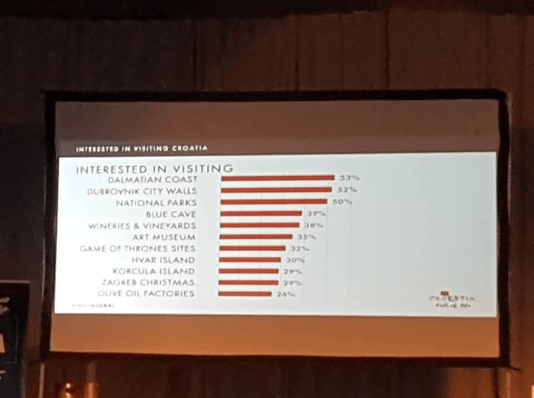
The lack of coordinated promotion of Croatia's wine story is all the more odd as it is one of the most sought-after things of interest (number 5 after the Dalmatian coast, Dubrovnik walls, national parks and Blue Cave) for the American market, which is one of the top priorities for our tourism chiefs.
So why not give them the content that they are craving?
Why not do something constructive and concrete rather than writing meaningless reports and strategies? The current 7-year plan which started in 2013 envisages 30 golf courses by next year, for example - so far not only have none been built, none have even been started or received permits. But the Ministry managed to participate in two out of the three planned golf tourism conferences this year.
So why not give tourists what they so desperately looking for - content? Why not build (or convert - there are SO many amazing buildings which could be used) not one but four wine museums in each of the main Croatian wine regions of the country - Dalmatia, Istria and Kvarner, Slavonia, and the Plesivica, Zagorje and Medjimurje area? Keep the core content similar, but with detailed focus on that particular region, so that visitors can learn and be tempted to try the local wines, as well as having more of an idea of what to look out for later in their holiday.
Imagine a wine museum which had the following:
The timeline of the Croatian wine story, which dates back thousands of years.
A detailed look at at least some of the 130 indigenous grape varieties that make this country stand out.
A section on the story of the original Zinfandel.
A section on the 1976 Judgment of Paris and the Mike Grgich story.
A section on the international winemaking stars of Croatian descent.
A history of the winemaking process in Croatia, with appropriate materials from the past.
A section on the particular region where the museum is located - wine road, notable winemakers, grape varieties, regional history.
A tasting room, of course, where guests can learn more about the region with various themed presentations.
A shop (and online shop) where wine and other souvenirs can be purchased.
It could be a great promotional tool for gourmet tourism in Croatia, as well as an excellent destination for those rainy days.
And at least we would be telling tourists about one of the treasures of Croatia that we keep complimenting ourselves on. In order for others to get the message, you have to give them some content.
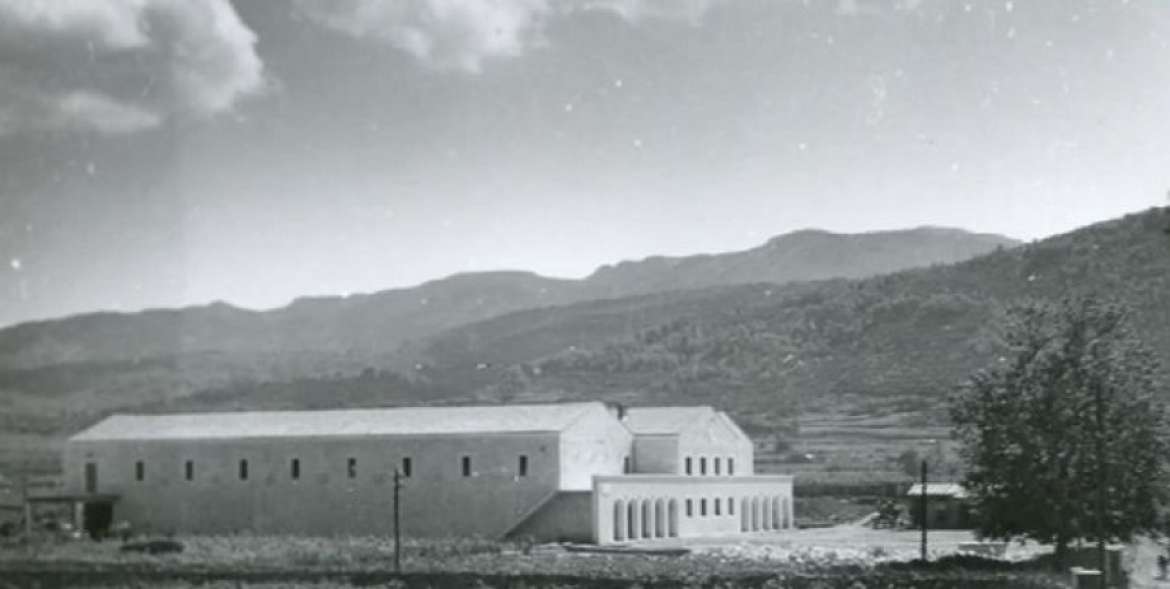
I am sure that there would be EU funds available. As for locations, the Stari Grad winery on Hvar has just been returned to the town. Located on the edge of the UNESCO World Heritage Site, the Stari Grad Plain, it would be an outstanding location.
Let's give our visitors a world-class wine tourism experience to go with Bourdain's world-class wines.
Learn more about Croatia wine with the Total Croatia Wine in a Page guide.

